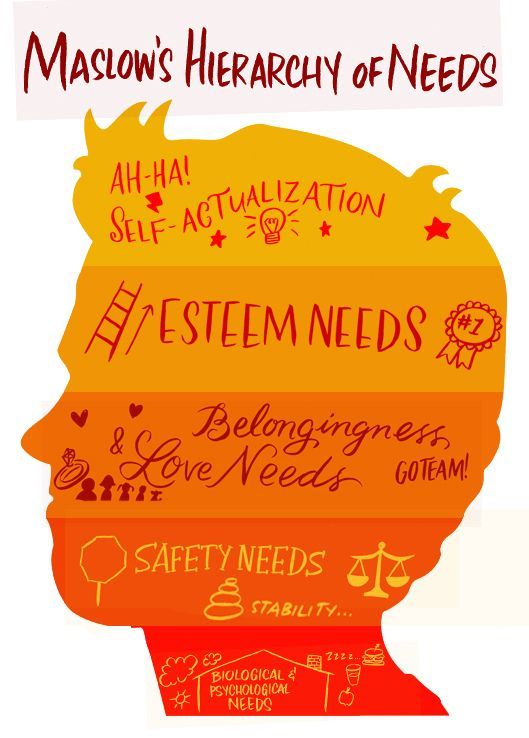
Image via mustbethistalltoride.com
I was listening recently to a medical doctor addressing a question about why, during the Coronavirus pandemic, people were reporting mental fogginess, an inability to concentrate, forgetfulness, and difficulty doing the creative things they had previously enjoyed. Was that, the question posed, actually a thing?
It is, and the doctor used Maslow’s Hierarchy of Needs to explain why. Prior to the crisis, most of us spent a large portion of our time at the top of the hierarchy, in the space called “Self Actualization,” where we work on being our best selves through exercise, education, hobbies, and so on. The crisis threw everyone down into the very bottom of the hierarchy, to the space called “Psychological Needs.” This space is where we concern ourselves with our most fundamental needs: food, shelter, rest, health, not being prey…basic survival. The fogginess and inability to concentrate comes from the overriding need to make sure we survive. This is why squirrels didn’t invent the internet: they’re constantly worried about finding food and not being eaten.
So then — and this is where I went straight down a rabbit hole — I started thinking about this in the context of education because I remembered Maslow’s Hierarchy from an Ed Psych class I took about 30 years ago when I was studying to be a teacher. At the time, it was very abstract, mainly because we didn’t add to the understanding that there was a whole swath of the population whose experiences looked really different than our own: food was not a given, shelter might be transitory or disrupted, rest wasn’t uninterrupted, medicine wasn’t available, and so on. Now, of course, we have more research and awareness of how these situations affect what goes on in the classroom. I would go even further and say that in this moment, many of us have recently completed a 10-week crash course in what the absence of those basic psychological needs (and some of the other needs in the hierarchy) can do to our higher cognitive functions. We’ve experienced fear, stress, food shortages, toilet paper shortages, job loss that resulted in loss of income that resulted in the inability to get food or pay rent, and so on. The constant threat of COVID-19 infecting us or our loved ones has led to feelings of instability and lack of safety. The total economic shutdown has cut many of us off from the social networks we rely on for a sense of belonging. In a word, (and to varying degrees) we’ve all suffered trauma.
Some of our students feel like this all the time.
My rabbit hole also led me to something that is frequently linked to Maslow’s Hierarchy: Brain Compatible Learning. BCL leans heavily on Maslow to design not so much instruction but the instructional environment to meet the needs identified in the hierarchy. You can read a little about it in Addressing Our Needs: Maslow Comes to Life for Educators and Students from Edutopia and this scholarly article exploring how BCL was received by ELL students. I suspect it’s going to feel a little touchy-feely for some, though many excellent elementary teachers do this as a matter of course. One of the basic tenets of BCL is that it is student-centered, a concept that a lot of districts and schools pay lip-service to but don’t actually do very well. Barkley and Bianco (Learning experts examine shortfalls in onsite and online training, 2001) asserted that teachers teach what they teach, irrespective of student needs. That’s problematic if the goal is to be student centered. I freely admit that teachers are often torn between the twin poles of student-centered learning and state standards which have to be taught — there is tremendous pressure to get the content delivered and students do tend to get in the way of that sometimes. But perhaps resolving the tension lies in our ability to address those fundamental needs so that learning can happen.
We need to take our recent experiences with coronavirus and channel them directly into the classroom, both in the form of increased understanding and empathy and also in the form of better, more targeted actions and interactions with students. I was so proud of the districts in my city when one of the first things they did when the schools closed was set up mobile meal sites for kids so they could have breakfast and lunch each day as they would during school. Many — nearly all — of them are continuing this meal service through the summer. That’s a concrete, targeted action designed to meet a basic need. Not having to worry about whether you’ll eat frees the brain to do other things. We need more of this kind of thing if we want to help kids be successful in the classroom. I could spitball a list, but I am more interested in tailoring this to specific classrooms, schools, and districts.
What would you do in your district to address a critical need?
